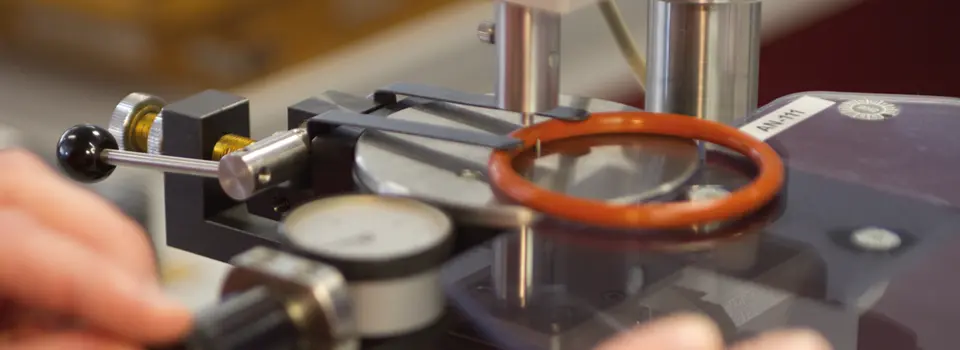
O-rings
O-rings are used in all sectors of industrial engineering. Our wide range of O-rings covers the entire spectrum from standard compounds to high-performance elastomers. Seal Supply has a large stock, so you as a customer will benefit from short delivery times
Read moreO-rings
O-rings are circular seals with a circular cross section. O-rings can be produced in a wide range of materials and a series of compounds are available from stock as standard. The number of sizes of O-rings available is so large that almost any application can be realized.
O-rings are standardized in the DIN ISO 3601 (formerly DIN 3771). The simple form and reliability of the sealing function of O-rings is brilliant. The O-ring is the most widely used seal for this reason. The economical manufacture and uncomplicated assembly make the O-rings unsurpassed. The description of the O-rings consists of the dimensions of the inner diameter (d1) and the cord thickness (d2) in mm. with the material designation and its hardness (shore).
Special properties of O-rings
O-rings have a number of special properties. For example, O-rings offer high operating reliability and are suitable for small installation spaces. In addition, O-rings are easy to assemble, contribute to economic production and O-rings have high availability.
Applications for O-rings
O-ring seals are used in all sectors of industrial technology. In individual applications, a distinction is made between in static (no relative movement between the machine parts to be sealed) and dynamic (the machine parts to be sealed move relatively toward each other) applications. The vast majority of O-rings are used for sealing resting or slow-moving machine parts.
Supplied materials
We can supply O-rings in the following materials: NBR, FKM, EPDM, VMQ, HNBR, FFKM, FVMQ, FEPM, ACM, CR, SBR, CSM, ECO, BR, IIR, IR, AU, EU, NR & seamless FEP sheathed (FKM / FEP sheathed and VMQ / FEP sheathed).
The online wholesale supplier for all your seals
O-rings can be ordered at Seal Supply easily and in multiple ways. You can place your order with us online as well as by phone or email. By creating your own webshop account you get the necessary benefits. You will always have insight into stock and delivery times. If you do not yet have a webshop account, click here to request your own account with us.
O-rings for DIN 11864 flange
DIN 11864 | Article number | |||||
DN number | Quality | Dimensions | ||||
EPDM 70 (FDA) | VMQ 70 (FDA) | NBR 70 (standard) | FKM 75 (standard) | |||
DN10 | 1298470 | 103689 | 11470 | 425281 | 12 x 3,5 | |
DN15 | 1299482 | 103980 | 11550 | 425730 | 18 x 3,5 | |
DN20 | 1300091 | 104184 | 11598 | 426014 | 22 x 3,5 | |
DN25 | 288653 | 33709 | 10890 | 426391 | 28 x 3,5 | |
DN32 | 1301580 | 104677 | 11707 | 426707 | 34 x 5 | |
DN40 | 1302195 | 32826 | 11760 | 427010 | 40 x 5 | |
DN50 | 1303185 | 105214 | 8484 | 427507 | 52 x 5 | |
DN65 | 1304260 | 64132 | 11920 | 500420 | 68 x 5 | |
DN80 | 1305063 | 85769 | 8787 | 428493 | 83 x 5 | |
DN100 | 1305946 | 85770 | 12512 | 428993 | 102 x 5 | |
DN125 | 1306992 | 85771 | 9100 | 429581 | 127 x 5 | |
DN150 | 1307861 | 107011 | 9228 | 430108 | 152 x 5 | |
Cookie Consent
Seal Supply uses cookies. Please select your preferences below.
